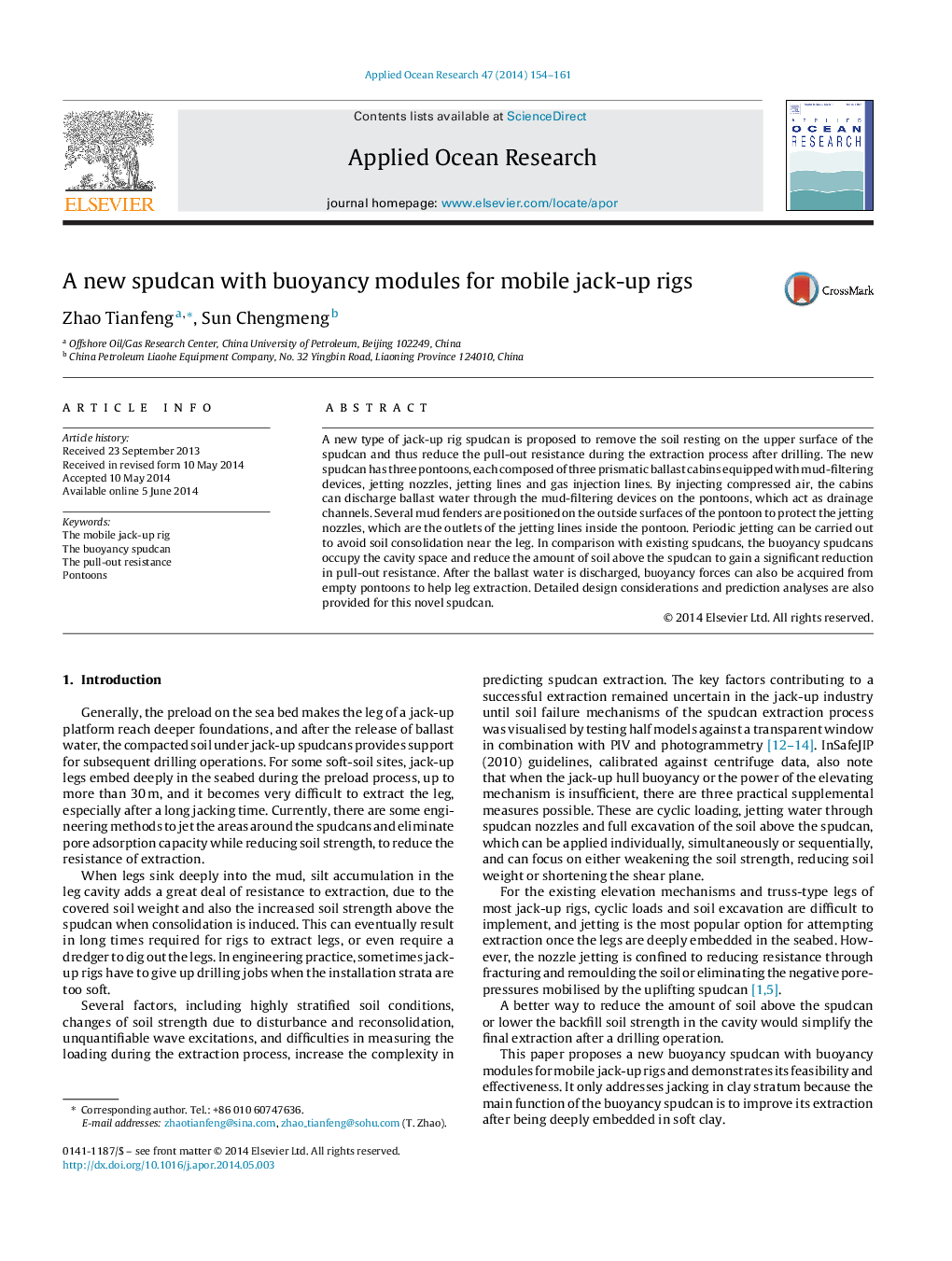| Article ID | Journal | Published Year | Pages | File Type |
|---|---|---|---|---|
| 1720048 | Applied Ocean Research | 2014 | 8 Pages |
•A new buoyancy spudcan is proposed to reduce the pull-out resistance after drilling.•Buoyancy modules are used to solve the covered soil weight and the lack of buoyancy.•The feasibility and effectiveness is demonstrated by some model experiments.•For the prototype jack-up rig 27-31% pull-out resistance reduction can be expected.
A new type of jack-up rig spudcan is proposed to remove the soil resting on the upper surface of the spudcan and thus reduce the pull-out resistance during the extraction process after drilling. The new spudcan has three pontoons, each composed of three prismatic ballast cabins equipped with mud-filtering devices, jetting nozzles, jetting lines and gas injection lines. By injecting compressed air, the cabins can discharge ballast water through the mud-filtering devices on the pontoons, which act as drainage channels. Several mud fenders are positioned on the outside surfaces of the pontoon to protect the jetting nozzles, which are the outlets of the jetting lines inside the pontoon. Periodic jetting can be carried out to avoid soil consolidation near the leg. In comparison with existing spudcans, the buoyancy spudcans occupy the cavity space and reduce the amount of soil above the spudcan to gain a significant reduction in pull-out resistance. After the ballast water is discharged, buoyancy forces can also be acquired from empty pontoons to help leg extraction. Detailed design considerations and prediction analyses are also provided for this novel spudcan.
